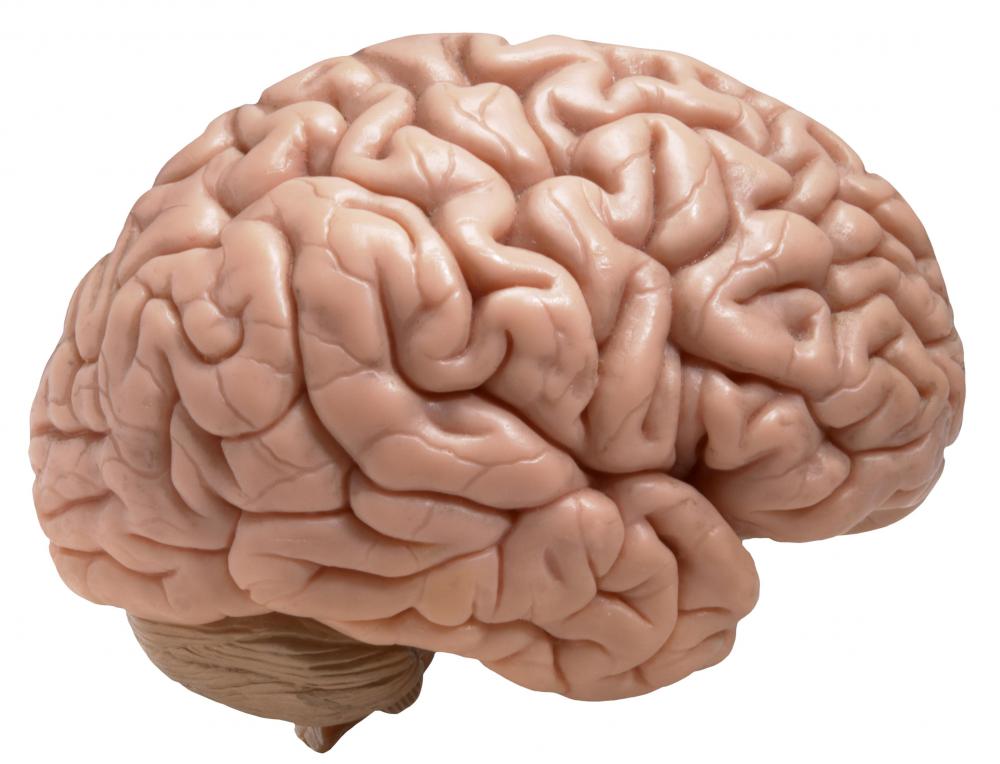At WiseGEEK, we're committed to delivering accurate, trustworthy information. Our expert-authored content is rigorously fact-checked and sourced from credible authorities. Discover how we uphold the highest standards in providing you with reliable knowledge.
What Is the Anatomy of the Basal Ganglia?
The basal ganglia are a symmetrical set of structures within the brain's central region that control motion. They consist of a conglomeration of nuclei deep inside the cerebral cortex. All of the sensory and motor areas of the outer section of the brain send signals that are routed through the caudate as well as the putamen within a part of the anatomy of the basal ganglia called the striatum. The caudate processes signals that are related to behavior as well as motivation, and the putamen process sensory and motor function patterns. Basal ganglia type structures are found in mammal, bird, reptile, fish, and amphibian brains.
Much of the sensory input travels through the striatum, which serves as a primary input area from other parts of the brain. Most of the nerve projections come from the motor and prefrontal cortices. The medial caudate and another part of the anatomy of the basal ganglia called the nucleus accumbens collect signals from the frontal cortex and the limbic areas of the brain, so the connection between thought and motion are controlled here. Interconnections also exist between the caudate, putamen, and the substantia nigr, and the output from these areas leads to the globus pallidus.

There are two sections that make up the globus pallidus. Motor functions are controlled by the thalamus, but signals impeding this function are controlled and sent to the thalamus by the globus pallidus externa. The second part of the globus pallidus, called the globus palidus interna, aids in the control of posture through communication with the midbrain. Signals are retrieved in the globus pallidus from the caudate and putamen, and both of these areas direct information to the subthalamic nucleus.
Neural pathways are either direct or indirect. The path of signals from the cortex into the basal ganglia, to the thalamus, and back to the cortex is a direct path, while an indirect pathway leads from the cortex to the striatum, the external globus pallidus, the subthalamic nucleus, the internal globus pallidus, and to the thalamus and cortex. Direct pathways are excited by dopamine, and indirect ones are inhibited by it, creating the infrastructure for understanding the patterns of positive and negative feedback.
The anatomy of the basal ganglia is complex and includes a variety of pathways for neural signals that go to and from other parts of the brain. Both the claustrum and amygdala are also linked to the general structure, but do not control movement. Damage to any part of the basal ganglia leads to a disruption in movement, such as that seen in Parkinson’s disease, obsessive-compulsive disorder, cerebral palsy, and others.
AS FEATURED ON:
AS FEATURED ON:











Discuss this Article
Post your comments